A fresh layer of snow makes my heart sing and I can’t resist any opportunity to look at footprints left behind by those who travel through it.

And so early this morning I followed the trail of a fox who had walked in a straight line for the most part, with a wee diversion here and there, perhaps to sniff out possibilities.

While the fox’s path continued northward, I decided to turn at the logging road and headed west, curious as to what stories might unfold.

It was the papery calyx of Indian Tobacco to which my eye was next drawn. Its winter manifestation, both delicate and light, offered an ethereal image in a global manner.
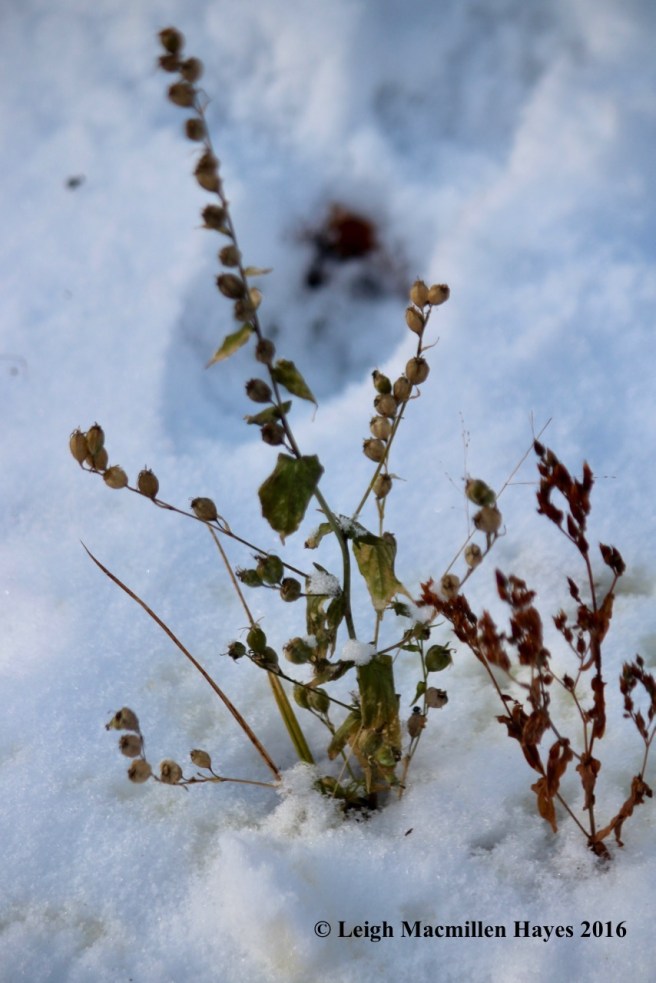
Often a solitary plant, I found it scattered along the path. And then, at one particular spot, I noticed something more than just its form and stature.
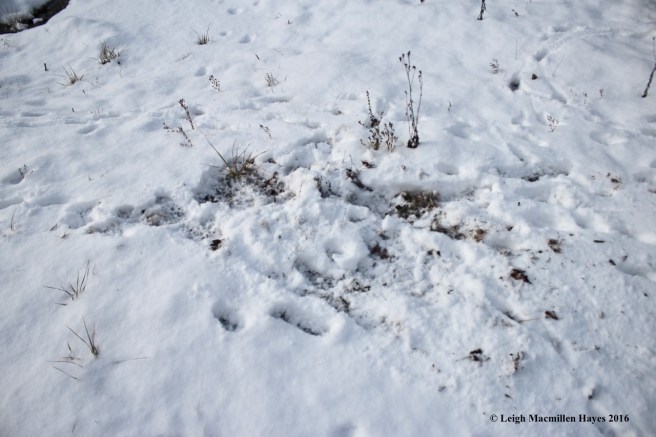
This was the sight of coyote play. Several coyotes at play, in fact.

And one, or maybe more than one, had peed on the Indian Tobacco. Curiously, Lobelia inflata, as it is known, is a poisonous annual–maybe the coyotes knew that. Or maybe it was just the right spot for one to claim familial rights.

I’d arrived at the log landing, that staging place to which logs are hauled, trimmed and loaded onto timber trucks. It’s also the perfect stage for all who dance in the night. In this case, I noted the tracks of at least four coyotes, presumably a family clan, who’d zigged and zagged as they crossed the landing.
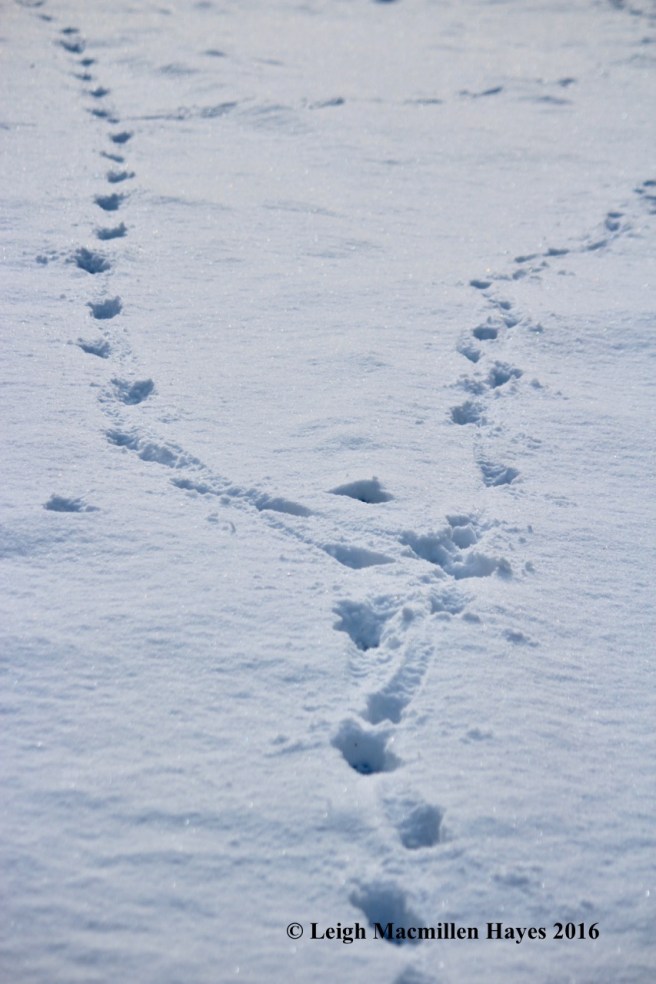
Sometimes they’d followed each other and then split apart.
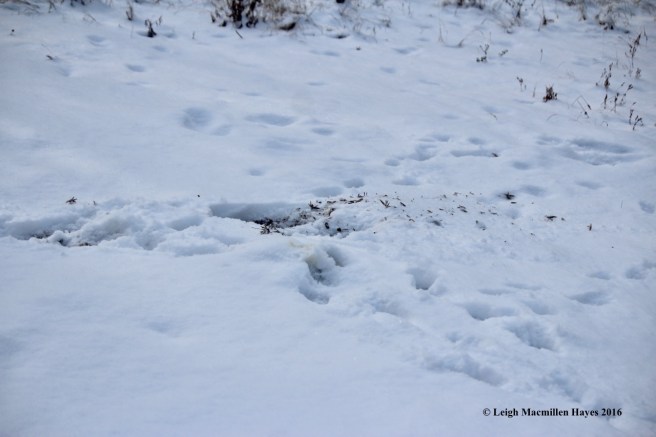
But over and over again, they came together, perhaps to play. And maybe it was also a rehearsal for future hunts, practicing yet again how to circle prey.

I turned around at this point, and as I headed back, I suddenly realized a moose had passed, though earlier than the coyote clan.

And a snowshoe hare had also bounded through the scene previously.

More in tune with the coyotes’ time frame, a ruffed grouse had left tracks, but I trust flew off without meeting its demise–yet.

On my way back, with my eyes still drawn downward, I noticed other visitors. I suspect this was a carpenter ant.
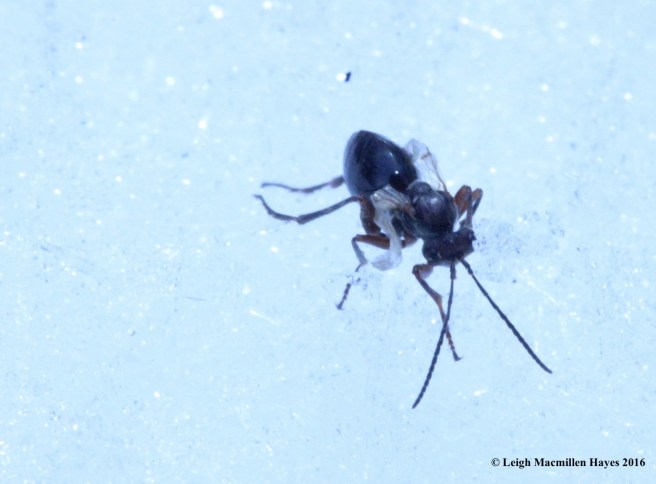
It was beside a rushing stream and its wings were folded. Had it taken a dip? It kept raising one leg at a time, as if uncertain of the snowy base upon which it walked.

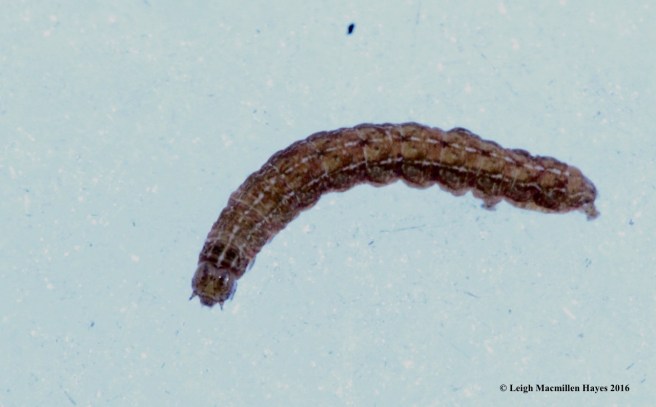
I found snow cutworms, the larval stage of a noctrid moth. They were less than an inch long, similar in size to a balsam fir needle and I’m not sure how I keyed into them, except that once I did, I noticed them again and again. How had I missed ever viewing these before, I wondered.

Also quite minute, a tiny spider that posed beside my boot.
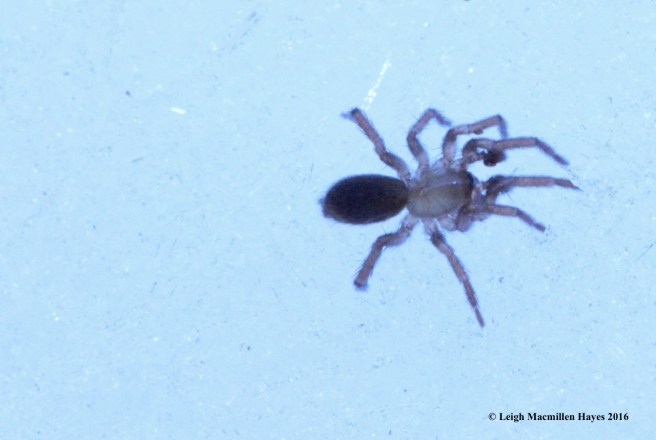
Its hairy body seemed to suit the situation.
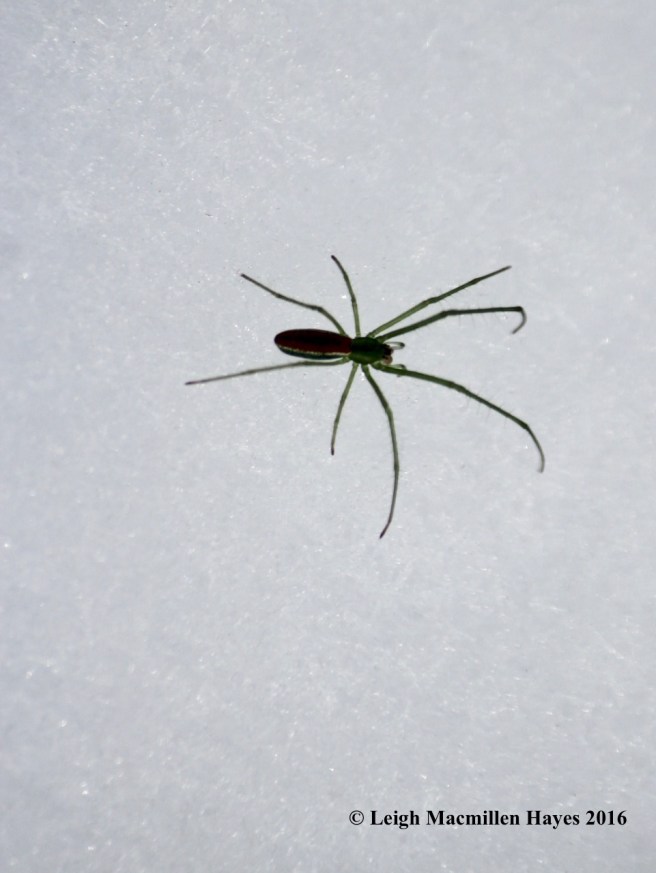
But my favorite find of all, a much larger spider . . .
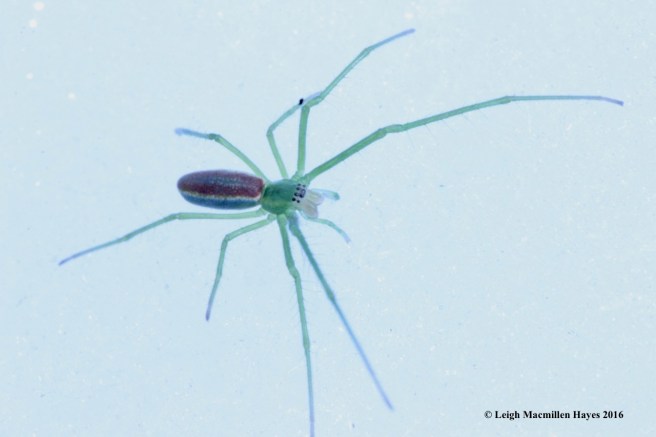
complete with a translucent green head and legs, made lighter by the flash of my camera. Why, oh why, did it cross the snow? Perhaps it was a fishing spider? If you know, do tell.
What I know is that it was beautiful, brought a smile to my face, made my heart sing and was the perfect culmination of all that I had wondered about at my feet.
(P.S. Fellow Master Naturalist Alan Seamans shared this with me: ” The beautiful green spider is Tetragnatha viridis, the green long-jawed orb weaver. The color of the abdomen is variable, sometimes with little red, other times with a lot of red like yours (doesn’t seem to be gender-related either). Normally their green color helps them camouflage amongst pine needles, their usual habitat, however it seems that they are frequently spotted in winter on snow for some reason! This species is common in the eastern US. Your specimen shows several i.d. characteristics: eight eyes in two sets of four parallel; long chelicerae (jaws), long legs with spines, and of course the beautiful green color. I will make a guess that it is a female because it lacks enlarged pedipalps? The genus is also called stretch spiders, ’cause that’s what they do! Stretch out those long legs so they look thin and blend in on pine needles and twigs.” Thank you, Alan.
And Rich Holschuh’s comment below.)

You must be logged in to post a comment.